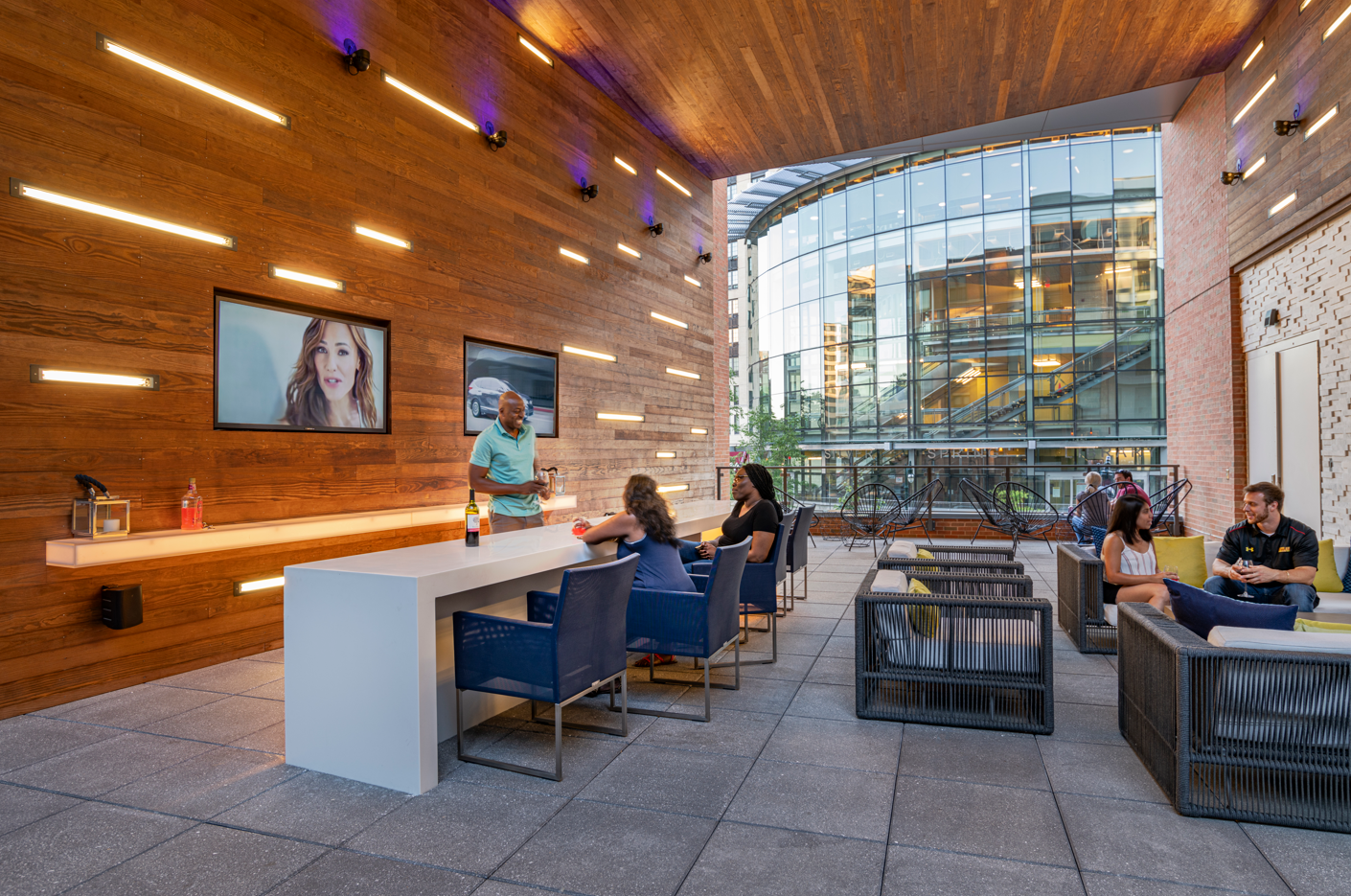Examining US Coastal Gateway Market Resilience
US gateway metros were hit hard by the pandemic, with remote work driving population outflows and weakening real estate demand.
Our North American property business has released new research on post-pandemic shifts in living and working patterns across US metros, revealing that demographic, economic, and real estate trends are returning to pre-pandemic norms.
Completed in collaboration with Rosen Consulting Group, this report explores the structural advantages of its target U.S. investment markets—Seattle, the San Francisco Bay Area, and Washington, D.C.—and the residential real estate opportunities emerging from their ongoing recovery.
Gateway Resilience


01. Long run drivers of success
Our target markets lead the country in pay and productivity
Grosvenor’s three major target metros are within the top 5 highest paid metros in the country. The high income and productivity of these markets are driven by one of the most educated workforces in the country.
Vibrant and walkable urban experience
San Francisco, DC, and Seattle represent some of the most walkable cities in the entire country, with walk scores twice the national average. Almost all residents living in any of our target market lives within a 10-minute walk of a park. They also include access to common urban amenities such as top food and cultural destinations ranging from Michelin Star restaurants to nationally acclaimed museums.
A unique and irreplicable education and innovation ecosystem
Target markets are home to some of the best universities in the nation including Stanford University, University of California, Berkeley, and Georgetown University, and spend well within the top 20% nationally on research and development spending. In 2023, the Bay Area represented one-third of all venture capital deals nationally amounting to over $15 billion.
Robust local economy driven by a highly educated workforce
Top 10 US Metros by educational attainment
Economic growth is driven by some of the most highly educated workforce in the country, as indicated by this chart which shows the percent of population ages 25 and older with at least a bachelor's degree.


02. Gateway metros come back to life
Back to population growth in target markets
The trend of mass outflows during the pandemic seems to be reversing as the return of international migration is helping support population growth.
Historically, as gateway metros grew, domestic residents would leave as they were priced out from the higher cost of living growth. But this was more than made up for by international migration which supported positive net migration. It was only during the pandemic when borders close did gateways experience drastic outflows. As borders reopen and migration returns, gateways are seeing a resurgence of population growth. For example, in 2024, DC migration was at its highest level since the GFC.
Lower cost metros not as low cost as they once were
The initial appeal for many of these non-gateway markets are shifting as the cost of living has increased. Major growth markets in the Sun Belt have seen inflation in excess of the national average due to the mass influx of people moving to the area. Single family home affordability saw some of the greatest declines in these metros as boom cities like Las Vegas or Tampa saw affordability declines of 51 and 55 percentage points (pp) respectively. Conversely, markets like the Bay area or New York City saw declines of 12 and 18 pp compared to the national average of 33 pp. (2014-2024 data).
Metro DC entertainment and real estate usage rates (% of 2019 usage rates)
Fun has come back to our target markets, despite low return to office
Gateway markets like San Francisco and Washington, DC have seen a bifurcated return to normal, shown here, as office utilization is the only major lagging indicator. Key metrics such as visits to recreational parks, attendance to major sporting events, weekend public transit ridership, and passengers at local airports have all seen a recovery of 80% or more when compared to their pre-pandemic (2019) average (2024 data). While hybrid work has become the norm stabilizing at a third of the work week, the overall lifestyle vibrancy in key gateway markets remains healthy post-pandemic.


03. High barriers to entry and limited new supply
Multifamily pipeline more balance versus near-term demand
The chronic lack of residential supply to meet demand in our target markets helps safeguard value and rental growth. This is because an increase in demand tends to feed into higher pricing versus new supply. We expect our target markets’ high barriers to entry in the multifamily space to continue to provide shelter from volatility going forward.
Apartment supply pipeline is low and more balanced with demand in our target markets
Balanced supply pipelines are supporting rental growth
Since 2020, the new supply pipeline in our target markets have been more balanced versus future demand growth than that in other US metros. This is expected to continue to be the case over the near-term as well. Markets that had supply pipelines in excess of near-term household growth have seen notable rental declines. By contrast, our multifamily rental growth in our target markets has held up better, owing partly to a better supply-demand balance.


04. Attractive entry point for residential real estate
Real estate cycle appears to be bottoming
The real estate downcycle that began with the Federal Reserve raising interest rates in March of 2022 has led to 7 consecutive quarters (and counting) of real estate price declines. This is already close to the GFC downcycle length (8 quarters) and about a year away from the Savings and Loan Crisis downcycle length (13 quarters). Windows of value declines tend to be short-lived and price declines in the apartment sector are already slowing. Grosvenor believes high-quality generational assets are likely to be available at relatively attractive pricing this year
Narrow window to acquire at attractive pricing followed by sustained growth
A rare window to acquire at exceptionally attractive pricing has opened
With the residential capital markets in our target markets primed to recover, investors are presented with a historic buying opportunity. Grosvenor Research has found that these windows of opportunity do not open often and typically do not last very long. When these periods of price declines ended, they were followed by around a decade of growth.


Conclusion
Many of the dislocating forces that impacted gateway metros and our target markets at the start of the pandemic – population loss stemming from remote work, a large cost of living gap with other metros, a lack of urban foot traffic and vibrancy – are steadily reversing.
The long-run and enduring appeal of these metros are attracting residents and investors again, while lower levels of building during the national building boom in the early 2020s has supported residential rental growth and occupancy levels. A narrow window of opportunity has opened to acquire high-quality assets at attractive pricing, which we expect to be followed by a long period of growth.